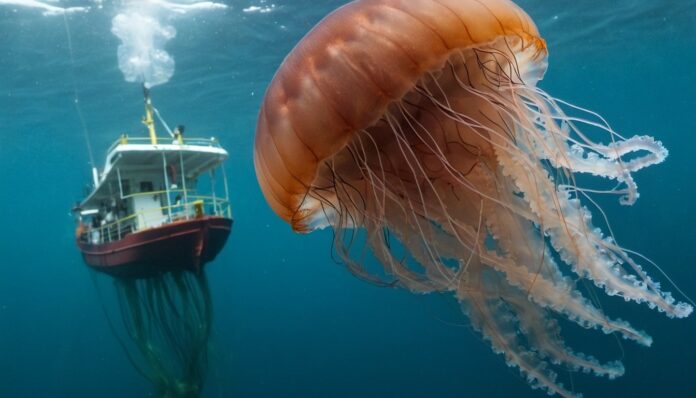Jellyfish are amazing sea creatures that come in various shapes and sizes. Some are small, while others are incredibly large. One of the most fascinating jellyfish is the Lion’s Mane Jellyfish, which holds the title of the biggest jellyfish in the world. Let’s dive into some interesting facts about this giant of the ocean!
The Giant of the Sea
The Lion’s Mane Jellyfish can grow to an enormous size. Its bell, or body, can reach up to 8 feet (2.4 meters) in diameter. However, the most astonishing feature is its tentacles, which can grow up to 120 feet (36.6 meters) long! This makes its tentacles longer than a blue whale, which is the largest animal on Earth.
Where They Live
These giant jellyfish are typically found in the cold waters of the Arctic, North Atlantic, and North Pacific Oceans. They prefer deep, open waters but sometimes can be seen near the shore, especially if they are chasing prey.
Diet and Hunting
Lion’s Mane Jellyfish are carnivorous. They feed on small fish, plankton, and other jellyfish. Their long tentacles have tiny, stinging cells called nematocysts that paralyze their prey. Once the prey is immobilized, the jellyfish uses its tentacles to bring the food to its mouth, located on the underside of its bell.
Interesting Facts
- Oldest Jellyfish: The Lion’s Mane Jellyfish has been around for millions of years, making it one of the oldest living creatures on Earth.
- Bioluminescence: Some Lion’s Mane Jellyfish can produce light, a phenomenon known as bioluminescence. This can create a beautiful glow in the dark ocean waters.
- Seasonal Appearance: These jellyfish are most commonly seen in the late summer and autumn months.
- Survival Adaptations: Despite their large size, Lion’s Mane Jellyfish can survive in the harsh conditions of cold ocean waters.
- Human Encounters: While stings from Lion’s Mane Jellyfish are not usually fatal to humans, they can cause pain and discomfort. It’s best to admire these creatures from a safe distance.
The Lion’s Mane Jellyfish, with its impressive size and unique features, remains one of the most captivating creatures of the sea. Whether admired for their beauty or studied for their ecological importance, these jellyfish continue to inspire awe and curiosity among scientists and ocean enthusiasts alike.
